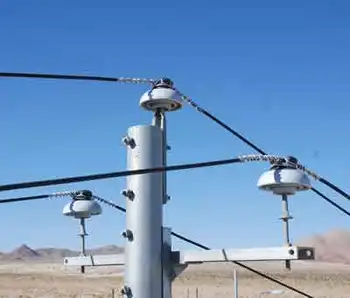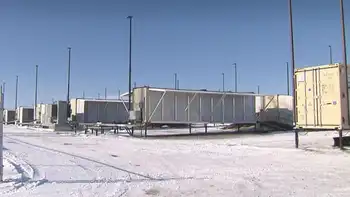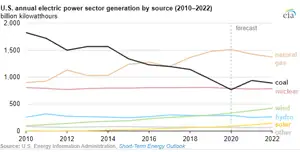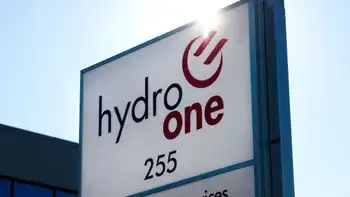Power cuts leave Kabul in the dark
KABUL, AFGHANISTAN - Gul Hussein was standing under a pale street lamp in a poor section of east Kabul when the entire neighborhood suddenly went black.
"As you can see, it is dark everywhere," the 62-year-old man said, adding that his family would light a costly kerosene lamp for dinner that evening. "Some of our neighbors are using candles, but candles are expensive, too."
More than five years after the fall of the Taliban — and despite hundreds of millions of dollars in international aid — dinner by candlelight remains common in the Afghan capital of Kabul. Nationwide, only 6 percent of Afghans have electricity, the Asian Development Bank says.
The electricity shortage underscores the slow progress in rebuilding the war-torn country. It also feeds other problems. Old factories sit idle, and new ones are not built. Produce withers without refrigeration. Dark, cold homes foster resentment against the government.
In Kabul, power dwindles after the region's hydroelectric dams dry up by midsummer. This past fall, residents averaged only three hours of municipal electricity a day, typically from 7 p.m. to 10 p.m., according to USAID, the American government aid agency. Some neighborhoods got none.
"That's a scary sounding figure because it's pretty tiny," said Robin Phillips, the USAID director in Afghanistan. "So we're talking about the relatively poorer people in Kabul who have no access to electricity at this time of year."
Electricity was meager under the Taliban too, when Kabul residents had perhaps two hours of it a day in fall and winter. The supply has since increased, but not as fast as Kabul's population — from fewer than 1 million people in the late 1990s to more than 4 million today.
Meanwhile, souring U.S. relations with Uzbekistan have delayed plans to import electricity from that country. Power is not expected to arrive in a significant way until late 2008 or mid-2009.
"Life takes power," said Jan Agha, a 60-year-old handyman from west Kabul who recalled how the city had plentiful power during the 1980s Soviet occupation. "If you have electricity life is good, but if there's no electricity you go around like a blind man." Some in Kabul do have electricity: the rich, powerful and well-connected.
Municipal workers — under direction from the Ministry of Water and Energy — funnel what power there is to politicians, warlords and foreign embassies. Special lines run from substations to their homes, circumventing the power grid. International businesses pay local switch operators bribes of $200 to $1,000 a month for near-constant power, an electrical worker said anonymously for fear of losing his job.
If high-ranking government officials visit the substations, workers race to cut off the illegal connections. Large diesel generators, which businesses and wealthy homeowners own as a backup, rumble to life.
Ismail Khan, the country's water and energy minister, dismisses allegations of corruption as a "small problem."
"The important thing to talk about is that in six months all of these power problems will be solved, and everyone will have electricity 24 hours a day," he said, an optimistic prediction that relies on heavy rains next spring and quick work on the Uzbekistan line.
Colorful maps on the walls of Khan's office show existing and future power lines. There's a wall-mounted air conditioner — a luxury in Afghanistan.
India, the Asian Development Bank and the World Bank have spent hundreds of millions of dollars on new power lines — including transmission towers installed this summer at 15,000 feet over the Hindu Kush mountains — to import electricity from Uzbekistan.
Though the line from Kabul to the Uzbek border is in place, a 25-mile section in Uzbekistan has not yet been built. And the U.S. has little leverage to speed it up, said Rakesh Sood, the Indian ambassador here.
Initially, Uzbekistan supported the U.S.-led war in Afghanistan, opening an air base to U.S. planes. But the Uzbek government no longer views America as a friend, ever since U.S. leaders loudly criticized the country's human rights record when government-backed forces massacred peaceful demonstrators in 2005.
Even when the Uzbek line is completed, Afghanistan can no longer expect the 300 megawatts originally envisioned, Sood said. That would have been more than the 190 megawatts Kabul has today and a significant boost to the 770 megawatts Afghanistan has nationwide.
"We know we'll get significantly less. I wouldn't hazard a guess as to what it will be," Sood said. "At that time the U.S.-Uzbek relationship was very high and it has deteriorated substantially."
President Hamid Karzai, during a radio address to the nation last fall, said he discussed with President Bush the country's need to produce its own electricity.
But some efforts have run afoul of the continuing Taliban insurgency. A new U.S.-financed turbine for a hydroelectric dam in Helmand province is a few months away from being installed because of the "lack of permissiveness in the environment," USAID's Phillips said, using a euphemism for the spiraling violence there.
Also, more than $100 million is needed to upgrade Kabul's antiquated distribution system, and it remains unclear who will pay.
"One doesn't like to see the kinds of numbers that we've been talking about, but I wouldn't call it a failure," Phillips said. "To put a little more positive spin on it we all wish things could happen more rapidly."
The lack of power has hamstrung U.S. efforts to boost agriculture production, too.
"The No. 1 challenge to agribusiness is electricity," said Loren Owen Stoddard, USAID director in Kabul for alternative development and agriculture. "You can't keep things cold and you can't bottle them without power."
The U.S. is purchasing fuel-powered generators that will provide 100 megawatts of power for Kabul by late next year. The power will not come cheap at 15 to 20 cents per kilowatt-hour, compared with just 3.5 cents for electricity from Uzbekistan.
But until the Uzbek power comes in, Afghanistan has no choice.
"It's going to be more oil-fired power and praying for rain to get the hydropower going," said Sean O'Sullivan, regional director with the Asian Development Bank.
On a smaller scale, India has spent $2.2 million to outfit 100 villages with $450 solar cells. They dot the flat rooftops in Mullah Khatir Khel, a mud-brick village an hour's drive north of Kabul. Each cell can power a couple of light bulbs.
"I am very happy, why should I not be happy? I am using these bulbs and lanterns provided by India," said villager Abdul Gayoom. "Before we used to burn oil lamps, now it's a big saving."
Related News

Volkswagen's German Plant Closures
BERLIN - Volkswagen (VW), one of the world’s largest automakers, is undergoing a significant transformation with the announcement of plant closures in Germany. As reported by The Guardian, this strategic shift is part of VW’s broader move towards prioritizing electric vehicles (EVs) and adapting to the evolving automotive market. The decision highlights the company’s commitment to sustainability and innovation amid a rapidly changing industry landscape.
Strategic Plant Closures
Volkswagen’s decision to close several of its plants in Germany marks a pivotal moment in the company's history. These closures are part of a broader strategy to streamline operations, reduce costs, and…




